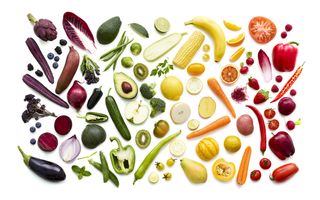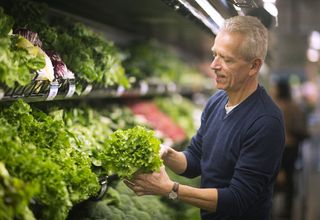What's the difference between fruit and vegetables?
What's the difference between fruit and vegetables — and why is tomato considered a fruit?

What's the difference between fruit and vegetables? At a glance, the answer to this question may seem pretty simple. Obvious, even. If it's sweet and juicy like a strawberry, it must be a fruit. And if it's savoury and fibrous like a carrot, it must be a vegetable. But is that how these two food groups are officially defined? Or are there any other aspects that need to be taken into account?
You may have heard that some people consider tomato a fruit. But tomato can sometimes be categorized as a fruit, and sometimes as a vegetable. That's because the exact definitions will depend on whether you're a gardener or a chef, as explained by the European Food Information Council (EUFIC). Moreover, your language and country of origin may also affect how you perceive this issue.
Here, we will explain what constitutes a fruit, and what is considered to be a vegetable, according to different definitions. You may be surprised!
Most people will look at the issue from a culinary standpoint. In that case, fruits and vegetables are separated based on their taste and aroma. According to this definition, fruits are sweet or sour, while vegetables are more mild and savory. These two food groups will also have different culinary uses. Fruits will be predominantly added to desserts, smoothies or juices, while vegetables will form a part of a hearty side dish or the main course.
However, what constitutes fruit and vegetables will look completely different to a botanist. According to the book Postharvest Physiology and Biochemistry of Fruits and Vegetables, fruits are seed-bearing structures that develop from the ovary of a flowering plant. This means that 'vegetables' like tomatoes, cucumbers, peppers, squash, pumpkins, eggplants, corn kernels, and bean and pea pods are actually fruits. Whereas a vegetable is any edible part of a plant that doesn’t happen to be a fruit, as in leaves (spinach, lettuce, cabbage), roots (carrots, beets, turnips), stems (asparagus), tubers (potatoes), bulbs (onions), and flowers (cauliflower and broccoli).

How you perceive fruit and vegetables may also depend on where you're from and the language you speak. In 2011, the journal Public Health Nutrition published a survey that revealed the scope of these cultural differences. According to their findings, rice was considered to be a vegetable by 20% of adult respondents based in the US. When compared with English speakers, Spanish speakers were more likely to call rice a vegetable. On the other hand, Chinese speakers were less likely to do so. Beans, which are often grouped in the vegetable category, also divided opinions. Compared to Spanish speakers, English speakers were more likely to label them as vegetables.
Debate over the difference between fruit and vegetables can sometimes reach such a fever pitch that the law must step in. In the 1893 United States Supreme Court case Nix. v. Hedden, the court ruled unanimously that an imported tomato should be taxed as a vegetable, rather than as a (less taxed) fruit, as described in the Mercer Law Review. The court acknowledged that a tomato is a botanical fruit, but went with what they called the "ordinary" definitions of fruit and vegetable — the ones used in the kitchen.
Originally published on Live Science. This article was updated on Aug. 24, 2022 by Live Science Health Writer Anna Gora.
Additional resources
To find out more about fruits and what defines them, you can read this article by The New York Botanical Garden, or this in-depth analysis provided by National Geographic.
For research about the nutritional benefits of fruit and vegetables, head to Harvard’s School of Public Health page.
Bibliography
"The Role of the Dictionary in Legal Thought". Mercer Law Review Vol. 039 Issue 03-046. https://ursa.mercer.edu/bitstream/handle/10898/7559/49_39MercerLRev961(1987-1988).pdf?sequence=1
"Postharvest physiology and biochemistry of fruits and vegetables". Yahia, E. M., & Carrillo-Lopez, A. (2018). https://books.google.co.uk/books?hl=en&lr=&id=lMlaDwAAQBAJ&oi=fnd&pg=PP1&dq=botanical+definition+fruit+and+vegetables
"The meaning of 'fruits' and 'vegetables'". Public Health Nutrition (2011). https://pubmed.ncbi.nlm.nih.gov/21272414/
Sign up for the Live Science daily newsletter now
Get the world’s most fascinating discoveries delivered straight to your inbox.

Ailsa is a staff writer for How It Works magazine, where she writes science, technology, history, space and environment features. Based in the U.K., she graduated from the University of Stirling with a BA (Hons) journalism degree. Previously, Ailsa has written for Cardiff Times magazine, Psychology Now and numerous science bookazines. Ailsa's interest in the environment also lies outside of writing, as she has worked alongside Operation Wallacea conducting rainforest and ocean conservation research.